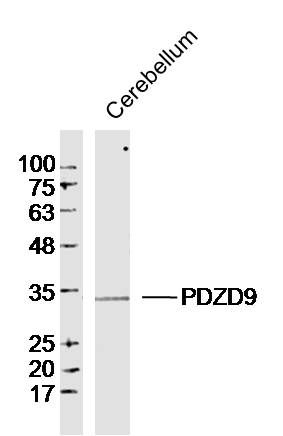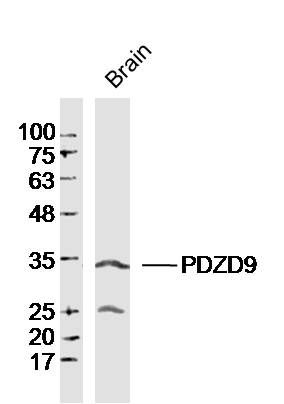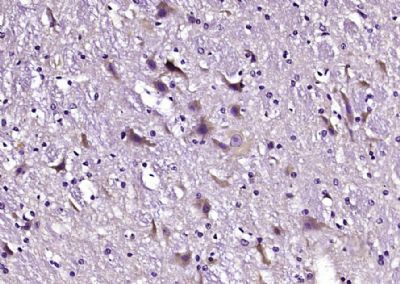PDZD9 (PDZ domain containing 9) is a 264 amino acid protein that contains one PDZ (DHR) domain and participates in protein binding. Conserved in chimpanzee, dog, cow, mouse and rat, PDZD9 exists as two alternatively spliced isoforms and is encoded by a gene that maps to human chromosome 16p12.1. Chromosome 16 encodes over 900 genes, approximately 90 million base pairs, makes up nearly 3% of human cellular DNA and is associated with a variety of genetic disorders. Giant axonal neuropathy, a nervous system disorder characterized by increasing malfunction with growth, and the rare disorder Rubinstein-Taybi syndrome, characterized by mental retardation and predisposition to tumor growth and white blood cell neoplasias, are associated with chromosome 16. Crohn's disease, a gastrointestinal inflammatory condition, and systemic lupus erythematosis are also associated with chromosome 16.
Similarity:
Contains 1 PDZ (DHR) domain.
SWISS:
Q8IXQ8
Gene ID:
255762
Database links:
Entrez Gene: 255762 Human
SwissProt: Q8IXQ8 Human
Unigene: 98244 Human
| Picture |
Sample: Cerebellum (Mouse) Lysate at 40 ug
Primary: Anti-PDZD9 (SL9632R) at 1/300 dilution
Secondary: IRDye800CW Goat Anti-Rabbit IgG at 1/20000 dilution
Predicted band size: 30kD
Observed band size: 30kD
Sample: Brain (Mouse) Lysate at 40 ug
Primary: Anti-PDZD9 (SL9632R) at 1/300 dilution
Secondary: IRDye800CW Goat Anti-Rabbit IgG at 1/20000 dilution
Predicted band size: 30kD
Observed band size: 30kD
Paraformaldehyde-fixed, paraffin embedded (mouse cerebellum tissue); Antigen retrieval by boiling in sodium citrate buffer (pH6.0) for 15min; Block endogenous peroxidase by 3% hydrogen peroxide for 20 minutes; Blocking buffer (normal goat serum) at 37°C for 30min; Antibody incubation with (PDZD9) Polyclonal Antibody, Unconjugated (SL9632R) at 1:200 overnight at 4°C, followed by operating according to SP Kit(Rabbit) (sp-0023) instructionsand DAB staining.
|
|
|


